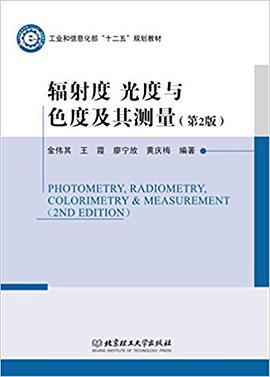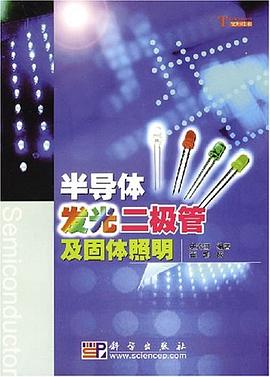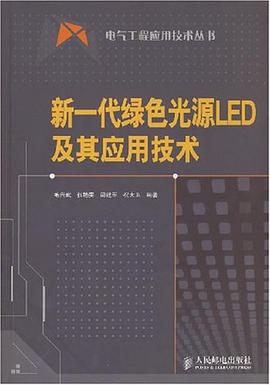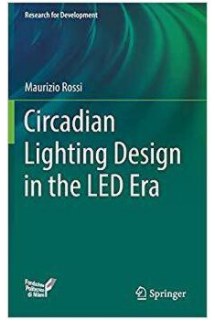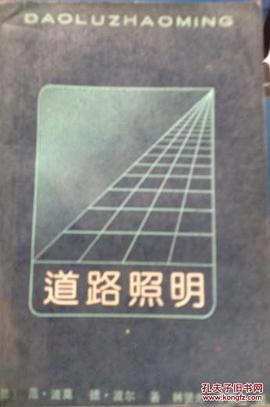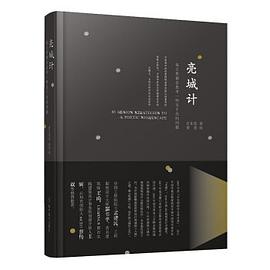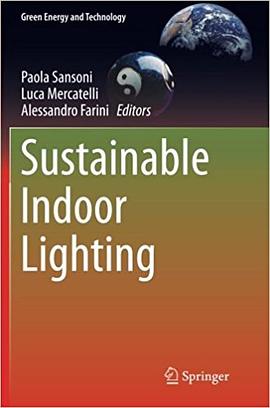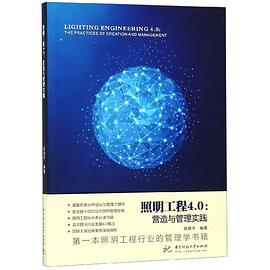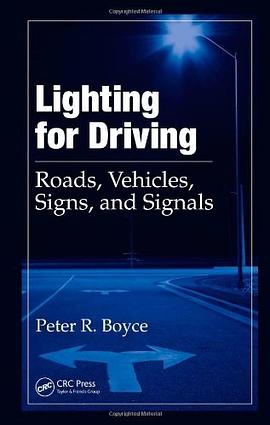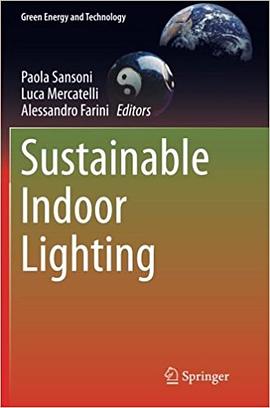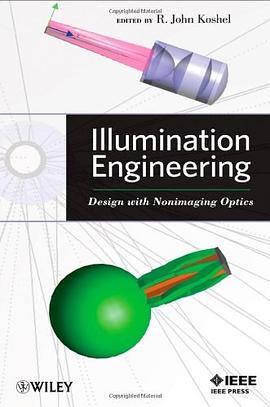

具體描述
This book brings together experts in the field who present material on a number of important and growing topics including lighting, displays, solar concentrators. The first chapter provides an overview of the field of nonimagin and illumination optics. Included in this chapter are terminology, units, definitions, and descriptions of the optical components used in illumination systems. The next two chapters provide material within the theoretical domain, including etendue, etendue squeezing, and the skew invariant. The remaining chapters focus on growing applications. This entire field of nonimaging optics is an evolving field, and the editor plans to update the technological progress every two to three years. The editor, John Koshel, is one of the most prominent leading experts in this field, and he is the right expert to perform the task.
著者簡介
John Koshel (Tucson, AZ), obtained Ph.D in Optics from University of Rochester in 1996. He is currently an adjunct assistant professor at University of Arizona, Optical Sciences Center. He also works as a vice president of optical engineering consulting firm, Photon Engineering, LLC. He frequently chairs at SPIE conferences and provides tutorial on the subject (nonimaging optics). He is a well respected figure in the International optical engineering community publishing numerous peer reviewed papers.
圖書目錄
CONTRIBUTORS xvii
GLOSSARY xix
CHAPTER 1 INTRODUCTION AND TERMINOLOGY 1
1.1 What Is Illumination? 1
1.2 A Brief History of Illumination Optics 2
1.3 Units 4
1.3.1 Radiometric Quantities 4
1.3.2 Photometric Quantities 6
1.4 Intensity 9
1.5 Illuminance and Irradiance 10
1.6 Luminance and Radiance 11
1.6.1 Lambertian 13
1.6.2 Isotropic 14
1.7 Important Factors in Illumination Design 15
1.7.1 Transfer Effi ciency 15
1.7.2 Uniformity of Illumination Distribution 16
1.8 Standard Optics Used in Illumination Engineering 17
1.8.1 Refractive Optics 18
1.8.2 Refl ective Optics 20
1.8.3 TIR Optics 22
1.8.4 Scattering Optics 24
1.8.5 Hybrid Optics 24
1.9 The Process of Illumination System Design 25
1.10 Is Illumination Engineering Hard? 28
1.11 Format for Succeeding Chapters 29
References 30
CHAPTER 2 ÉTENDUE 31
2.1 Étendue 32
2.2 Conservation of Étendue 33
2.2.1 Proof of Conservation of Radiance and Étendue 34
2.2.2 Proof of Conservation of Generalized Étendue 36
2.2.3 Conservation of Étendue from the Laws of Thermodynamics 40
2.3 Other Expressions for Étendue 41
2.3.1 Radiance, Luminance, and Brightness 41
2.3.2 Throughput 42
2.3.3 Extent 43
2.3.4 Lagrange Invariant 43
2.3.5 Abbe Sine Condition 43
2.3.6 Confi guration or Shape Factor 44
2.4 Design Examples Using Étendue 45
2.4.1 Lambertian, Spatially Uniform Disk Emitter 45
2.4.2 Isotropic, Spatially Uniform Disk Emitter 48
2.4.3 Isotropic, Spatially Nonuniform Disk Emitter 50
2.4.4 Tubular Emitter 52
2.5 Concentration Ratio 59
2.6 Rotational Skew Invariant 61
2.6.1 Proof of Skew Invariance 61
2.6.2 Refi ned Tubular Emitter Example 63
2.7 Étendue Discussion 67
References 68
CHAPTER 3 SQUEEZING THE ÉTENDUE 71
3.1 Introduction 71
3.2 Étendue Squeezers versus Étendue Rotators 71
3.2.1 Étendue Rotating Mappings 74
3.2.2 Étendue Squeezing Mappings 77
3.3 Introductory Example of Étendue Squeezer 79
3.3.1 Increasing the Number of Lenticular Elements 80
3.4 Canonical Étendue-Squeezing with Afocal Lenslet Arrays 82
3.4.1 Squeezing a Collimated Beam 82
3.4.2 Other Afocal Designs 83
3.4.3 Étendue-Squeezing Lenslet Arrays with Other Squeeze-Factors 85
3.5 Application to a Two Freeform Mirror Condenser 88
3.6 Étendue Squeezing in Optical Manifolds 95
3.7 Conclusions 95
Appendix 3.A Galilean Afocal System 96
Appendix 3.B Keplerian Afocal System 98
References 99
CHAPTER 4 SMS 3D DESIGN METHOD 101
4.1 Introduction 101
4.2 State of the Art of Freeform Optical Design Methods 101
4.3. SMS 3D Statement of the Optical Problem 103
4.4 SMS Chains 104
4.4.1 SMS Chain Generation 105
4.4.2 Conditions 106
4.5 SMS Surfaces 106
4.5.1 SMS Ribs 107
4.5.2 SMS Skinning 108
4.5.3 Choosing the Seed Rib 109
4.6 Design Examples 109
4.6.1 SMS Design with a Prescribed Seed Rib 110
4.6.2 SMS Design with an SMS Spine as Seed Rib 111
4.6.3 Design of a Lens (RR) with Thin Edge 115
4.6.4 Design of an XX Condenser for a Cylindrical Source 117
4.6.5 Freeform XR for Photovoltaics Applications 129
4.7 Conclusions 140
References 144
CHAPTER 5 SOLAR CONCENTRATORS 147
5.1 Concentrated Solar Radiation 147
5.2 Acceptance Angle 148
5.3 Imaging and Nonimaging Concentrators 156
5.4 Limit Case of Infi nitesimal Étendue: Aplanatic Optics 164
5.5 3D Miñano–Benitez Design Method Applied to High Solar Concentration 171
5.6 Köhler Integration in One Direction 180
5.7 Köhler Integration in Two Directions 195
5.8 Appendix 5.A Acceptance Angle of Square Concentrators 201
5.9 Appendix 5.B Polychromatic Effi ciency 204
Acknowledgments 207
References 207
CHAPTER 6 LIGHTPIPE DESIGN 209
6.1 Background and Terminology 209
6.1.1 What is a Lightpipe 209
6.1.2 Lightpipe History 210
6.2 Lightpipe System Elements 211
6.2.1 Source/Coupling 211
6.2.2 Distribution/Transport 211
6.2.3 Delivery/Output 212
6.3 Lightpipe Ray Tracing 212
6.3.1 TIR 212
6.3.2 Ray Propagation 212
6.4 Charting 213
6.5 Bends 214
6.5.1 Bent Lightpipe: Circular Bend 214
6.5.2 Bend Index for No Leakage 215
6.5.3 Refl ection at the Output Face 216
6.5.4 Refl ected Flux for a Specifi c Bend 217
6.5.5 Loss Because of an Increase in NA 218
6.5.6 Other Bends 219
6.6 Mixing Rods 220
6.6.1 Overview 220
6.6.2 Why Some Shapes Provide Uniformity 221
6.6.3 Design Factors Infl uencing Uniformity 223
6.6.4 RGB LEDs 226
6.6.5 Tapered Mixers 228
6.7 Backlights 233
6.7.1 Introduction 233
6.7.2 Backlight Overview 234
6.7.3 Optimization 235
6.7.4 Parameterization 235
6.7.4.1 Vary Number 236
6.7.4.2 Vary Size 236
6.7.5 Peak Density 237
6.7.6 Merit Function 237
6.7.7 Algorithm 238
6.7.8 Examples 239
6.8 Nonuniform Lightpipe Shapes 245
6.9 Rod Luminaire 246
Acknowledgments 247
References 247
CHAPTER 7 SAMPLING, OPTIMIZATION, AND TOLERANCING 251
7.1 Introduction 251
7.2 Design Tricks 253
7.2.1 Monte Carlo Processes 254
7.2.2 Reverse Ray Tracing 257
7.2.3 Importance Sampling 260
7.2.4 Far-Field Irradiance 263
7.3 Ray Sampling Theory 266
7.3.1 Transfer Effi ciency Determination 266
7.3.2 Distribution Determination: Rose Model 268
7.4 Optimization 272
7.4.1 Geometrical Complexity 273
7.4.2 Merit Function Designation and Calculation 280
7.4.3 Optimization Methods 281
7.4.4 Fractional Optimization with Example: LED Collimator 282
7.5 Tolerancing 289
7.5.1 Types of Errors 290
7.5.2 System Error Sensitivity Analysis: LED Die Position Offset 290
7.5.3 Process Error Case Study: Injection Molding 291
References 297
INDEX 299
· · · · · · (收起)
讀後感
評分
評分
評分
評分
用戶評價
相關圖書
本站所有內容均為互聯網搜索引擎提供的公開搜索信息,本站不存儲任何數據與內容,任何內容與數據均與本站無關,如有需要請聯繫相關搜索引擎包括但不限於百度,google,bing,sogou 等
© 2025 book.quotespace.org All Rights Reserved. 小美書屋 版权所有

